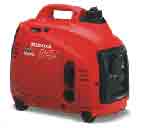LIFE
ON BOARD AND NAVIGATION
|
Living in a space of 6.50 meters long for one month!
As regards interior decoration, the 6_ meters of the Pogo
do not leave much room for anything fancy. A bunk bed in
the prow which is also used as a sail locker, 2 “coffin”
bunks under the cockpit, a little card table and a small
kitchen area. “No, there aren’t any toilets, but
compared with the prototypes, it’s absolute luxury”,
says Hervé.
|
|
The
food
La Rochelle-Lanzarote, the first stage (about 10 days’ sailing),
causes no real problems as regards food supply, although navigation
is another matter as it can be very difficult. During the Atlantic
crossing itself, however, (about 4 weeks) the matter of food storage
is much more important. As there is no refrigerator on board,
there are two possibilities:
- take dried food, which implies taking a lot of water to re-hydrate
it
- take vacuum-stored prepared dishes which can be heated up as
required on the single gas ring on board.
Hervé intends to combine both these methods but will not
be taking canned food because of the weight and the amount of
trash that implies. For your information, all Mini Transat competitors
have agreed to keep their rubbish aboard in conformity with the
“blue label” operation.
Sleep
This is one of the most important aspects of the regatta. Competitors
need to be properly rested in order to make the right decisions
regarding racing strategy and choose the right sails to use in
specific weather conditions. As a general rule, Hervé manages
to get to sleep very easily by means of sophrology relaxation.
This is a great advantage, for he will never be able to sleep
more than an hour and a half at a stretch. Usually, it will be
about 20 minutes. On average, a Mini skipper sleeps 4-5 hours
a day.
The
automatic pilots, energy and GPS (global positionning system)
Hervé has three automatic pilots on board - vital equipment
for solo sailing. The best one, an Autohelm 6000 linked to a gyro
pilot, which ensures faster reactions and stability based on the
position of the boat, is the same as those used in larger boats
like the 60-foot Open of the Vendée Globe. Its nickname?
Robin, like his son. And there is also a small sister called Julie,
which is an Autohelm 4000. Finally, he has a simple cockpit pilot
to use in an emergency.
Hervé has now a generato E10 offered by Honda Switzerland.
This will be really helpful during the first leg, if there is
no sunshine.

What fuel is used for these high-consumption instruments? Two
solar panels, one overhanging the stern and one mobile one, as
well as a gasoline generator generously provided by Honda Switzerland.
It should, however, be remembered that on a Mini the automatic
pilot works less well than a human pilot and that sessions at
the tiller vary between 15-20 hours a day! Fortunately, Hervé
has a GPS for navigation, which means he does not have to use
a sextant to calculate his position.
The
survival training
To prepare himself for the worst, Hervé followed in April
2001 a survival training stage of 1 day in Lorient. There was
either theoretical and pratical themes.Judge by yourself:
Accidents psychology, physiology in case of survival (hypotermia,
dehydration, sleep patterns) aquatic dangerous animals, security
kit, life support equipement for individuals or groups, dereliction
procedure, life in the sea in survival equipement, first aid box,
boat or helicopter rescue. Firing of distress flares, jumping
in the sea, swimming in the survival gear, and unfolding the inflatable
liferaft..
 |
Organised by the Centre d’Etude et de Pratique
de la Survie (CEPS), the day course is given in the close
down submarine base of Lorient. It is a "must" because
it is given by people who do not hesitate to jump in the water
with you. It is the same association who gave the course to
the skippers of the Vendée Globe. |



